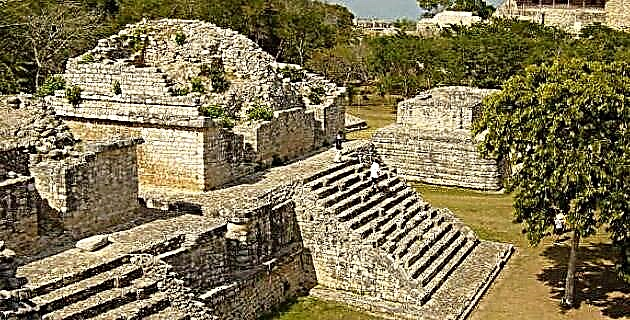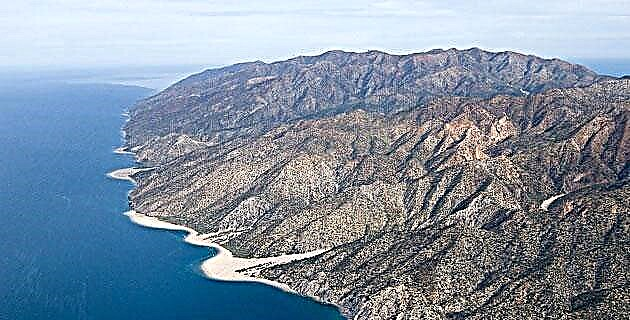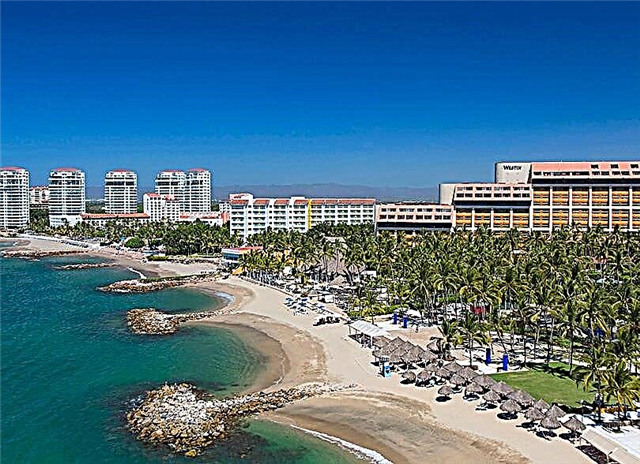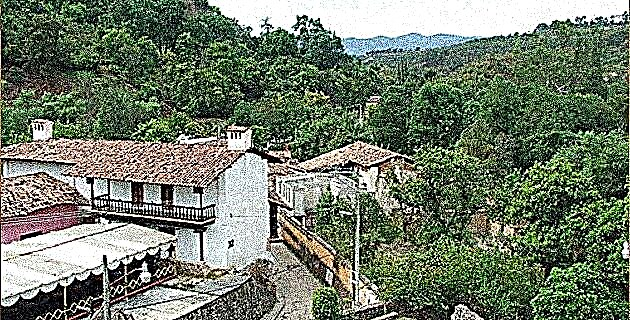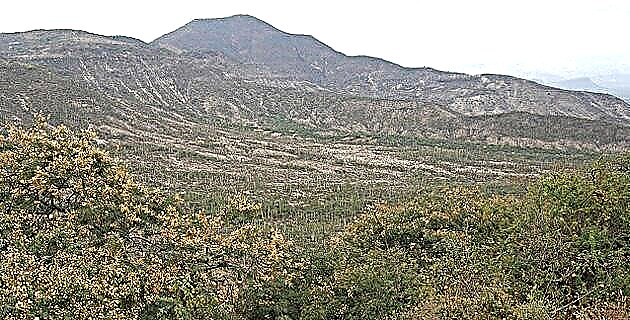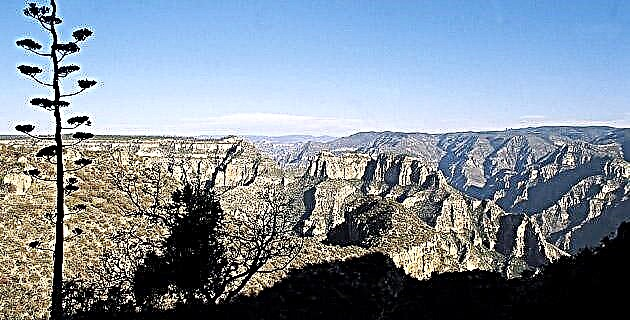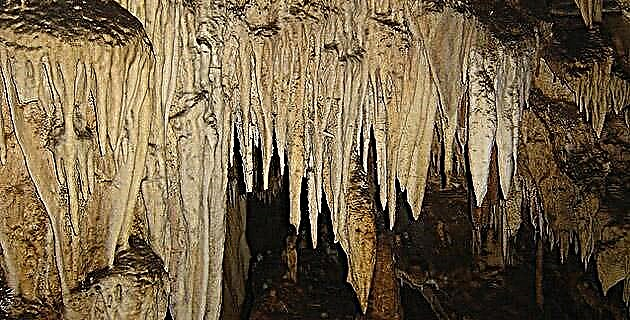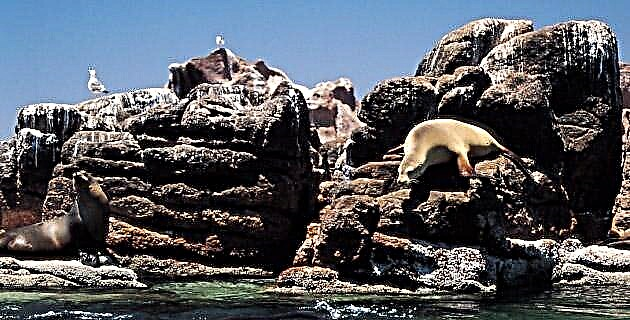
Located to the west of the Baja California peninsula, Guadalupe Island constitutes a unique ecosystem in the Mexican Pacific.
Located to the west of the Baja California peninsula, Guadalupe Island constitutes a unique ecosystem in the Mexican Pacific.
Located approximately 145 miles west of the Baja California peninsula, Guadalupe is the furthest island in the Mexican Pacific. This beautiful biological paradise has a total length of 35 km and a width that varies from 5 to 10 km; Its maximum height is estimated at about 1,300 meters, with 850-meter cliffs that are lost in the depths of the ocean.
The island is inhabited by abalone and lobster fishermen who have their homes in the Campo Oeste, where the housing complexes and the boats are protected by a beautiful bay from the strong winds and swells that hit the island during winter. This small community has electricity produced by motor generators installed in the housing unit, and a military ship brings them a supplement of 20 tons of drinking water every month.
The hospitality on the island was noticed from our arrival, as we were invited to have a delicious abalone salad with lobster (“you cannot get any fresher”, the housewife told us).
There is also a military garrison on the island, in the southern part, whose members carry out the necessary activities to control the vessels that arrive or leave the island, among other functions.
In Mexico, the abalone fishery at different sites has been drastically reduced due to immoderate exploitation and the lack of a management plan for this valuable resource; However, on Isla Guadalupe abalone fishing is managed in a rational way so that future generations have the opportunity to work and enjoy what the island provides.
There are currently six abalone divers on the island. The work day is not easy, it starts at 7 a.m. and ends at 2 p.m .; they dive 4 hours a day at 8-10 fathoms deep, in what they call "tide". In Guadalupe you dive with a hose (huka) and do not use conventional autonomous diving equipment (scuba). Abalone fishing is practiced preferably in pairs; The one that remains in the boat, called the “lifeline”, is responsible for ensuring that the air compressor works perfectly and maneuvering the oars; in an emergency, the diver gives 5 strong jerks on the hose to be immediately rescued by his partner.
Demetrio, a 21-year-old diver who has been working on the island for 2 years, tells us the following: “I was almost completing the task when I suddenly turned around and observed a huge shark, the size of the boat; I hid in a cave while the shark circled a few times and then decided to retreat; Immediately after, I gave 5 hard jerks on the hose to be rescued by my partner. I have run into the shark 2 times, all the divers here have seen it and there are also known fatal attacks on humans by these colossi ”.
Lobster fishing is less risky, as it is carried out with wooden traps, inside which fresh fish is placed to attract lobster; These traps are submerged at 30 or 40 fathoms, remain on the seabed overnight and the catch is reviewed the next morning. The abalone and lobster are left in “receipts” (boxes submerged in the sea) to preserve their freshness, and upon the weekly or fortnightly arrival of the plane, the fresh seafood is taken directly to a cooperative in Ensenada, where it is subsequently cooked. and canning, for sale in the national and international markets. The abalone shells are sold to stores as curios and the pearl shell to make earrings, bracelets and other ornaments.
During our stay in Guadeloupe, we met the "Russo", a strong and robust fisherman, older; He has lived on the island since 1963. The "Russian" invites us to have a coffee in his home while he recounts his experiences: "The strongest experiences that I have had throughout the years diving on this island are the appearances of the white shark, it is like seeing a zeppelin down there; nothing has impressed me more during all my life as a diver; I have admired him 22 times ”.
The work of the fishermen of Isla Guadalupe deserves attention and respect. Thanks to the divers, we can enjoy a wonderful abalone or lobster dinner; They respect the closures of the resource and take care that they are not stolen by pirates or foreign ships; in turn, they risk their lives daily, because if they have a decompression problem, which happens frequently, they do not have the decompression chamber necessary to save their life (the cooperative of which they are part and which is located in Ensenada , you should make an effort to acquire one).
FLORA AND FAUNA "INTRODUCED"
It is worth mentioning that the island has unmatched flora and fauna: in terms of marine mammals, the population of the Guadeloupe fine seal (Arctocephalus townstendi) and the sea elephant (Mirounga angustrirostris), almost extinct due to hunting at the end of the 19th century, it has recovered thanks to the protection of the Mexican government. The fine seal, the sea lion (Zalophus californianus) and the elephant seal are found grouped in small colonies; These mammals represent the main food of their predator, the white shark.
The people who live on Guadalupe Island feed mainly on marine resources, such as fish, lobster and abalone, among others; however, it also consumes goats that were introduced by whale hunters in the early 19th century. The expedition of the California Academy of Sciences estimated that in 1922 there were between 40,000 and 60,000 goats; Today it is believed that there are approximately 8,000 to 12,000. These ruminants have wiped out the native vegetation of Guadalupe Island because they have no predators; there are dogs and cats on the island, but they do not decimate the goat population (see Unknown Mexico No. 210, August 1994).
The goats on Guadalupe Island are said to be of Russian origin. The fishermen comment that these quadrupeds do not have parasites; people frequently consume them in carnitas, asado or barbecue, and dry part of the meat with plenty of salt, on a wire hung in the sun.
When the water runs out in Campo Oeste, fishermen take their rubber drums by truck to a spring that is 1,200 m above sea level. There are 25 km of rough terrain, almost inaccessible, to get to the spring; This is where the cypress forest, located at 1,250 meters above sea level, plays a crucial role on Guadalupe Island, because thanks to these beautiful trees the only spring on the island is preserved, which is fenced off to prevent the entry of goats and dogs. The problem is that this fragile cypress forest is rapidly being lost, due to intense grazing by goats, which causes erosion and the gradual reduction of the forest, as well as a loss in the diversity and abundance of birds that make use of this unique ecosystem. The fewer trees there are on the island, the less water is available from the spring for the fishing community.
Mr. Francisco belongs to the fishing community and he is responsible for bringing water to Campo Oeste when it is needed: “Every time we come for water we take 4 or 5 goats, they are frozen and sold in Ensenada, they are made there barbecue; the capture is easy since the dog helps us to corner them ”. He says that everyone wants the goats to be eradicated, because of the problem they represent for the vegetation, but there is no help from the government.
It is of the utmost importance to carry out a campaign for the extirpation of the goats, since the palms, the pines and the cypresses have not reproduced since the last century; If a serious decision is not taken by the authorities, a unique ecosystem with habitat of diverse and valuable endemic species will be lost, as well as the spring on which the families that inhabit the island depend.
And the same can be said for the other oceanic islands in the Mexican Pacific, such as Clarión and Socorro, belonging to the Revillagigedo archipelago.
The ideal season to visit Guadalupe Island is from April to October, since there are no storms during that time.
IF YOU GO TO ISLA GUADALUPE
The island is 145 miles to the west, departing from the port of Ensenada, B.C. It can be accessed by boat or by plane, which departs weekly from the airport located in El Maneadero, in Ensenada.
Source: Unknown Mexico No. 287 / January 2001

